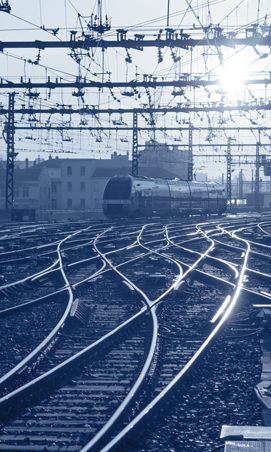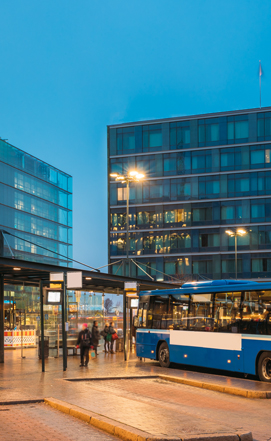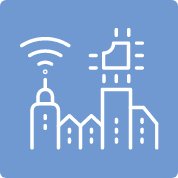
Transport systems are a fundamental part of our modern social and economic life. The EU aims to build a modern, integrated transport system that strengthens the EU’s global competitiveness and meets the challenges of sustainable, smart and inclusive growth.
To include new developments in transport the Commission updated the Strategic Transport Research and Innovation Agenda (STRIA) roadmap for transport infrastructure in 2019.
The roadmap identifies several key challenges for EU transport infrastructure, the most significant of which are: governance; pricing, taxation and finance; the syncromodality, intermodality, interoperability and integration of transport systems; life-cycle optimisation; construction; operation; safety; and security. Although the development of the first STRIA roadmap on transport infrastructure in 2016-2017 was mainly focused on the goal of decarbonisation, the updated version adopts a wider approach.
Decarbonisation is still an objective, but other aspects are also being considered, such as: the competitiveness of European industry; territorial cohesion; multimodality; services for visitors and the public; safety and security; etc.
The STRIA roadmap for transport infrastructure aims to:
- map out plans for R&I in these key areas;
- test new methodologies;
- pave the way for future transport infrastructure policies.

Transport infrastructure includes basic facilities and systems for operators and users, such as:
- urban public transport networks - including light rail (metro and tram), rail, bus, urban motorways and bus lanes;
- inter-urban or inter-regional - including motorways, mainline inter-city and high-speed rail, inland shipping and domestic aviation;
- international gateways - airport hubs and major sea ports - along with other regional ports and airports.
In addition, there is extensive supporting infrastructure:
- traffic and transport control systems, aimed at ensuring safe, secure, efficient, reliable and resilient transport for all modes of transport;
- fuel distribution infrastructure;
- information and communication technologies used for customer information, and for tracking, charging, ticketing and billing;
- areas for logistics activities including logistics hubs and dry-ports
- energy facilities including electrical traction power networks necessary for infrastructure and transport operation.
The existing infrastructure continues to evolve with investment by infrastructure owners to accommodate changing demand, changing vehicle types, and to improve network performance.
A level playing field in Europe and globally.
The challenge is to make the EU competitive, not only ensuring the required capacity and full integration between transport modes, but also expanding the EU’s industrial leadership globally.
Intermodality, interoperability, and integration of transport systems are therefore all of great importance.
Transport systems have been under continuous pressure to improve the safety and security of users for many years.
That pressure continues, especially in road transport, where fatal and serious injuries remain a social and economic problem. Moreover, pressure is also increasing to reduce the risks faced by maintenance workers and other people working on the construction and operation of transport infrastructures.
The advancement of vehicle technology is placing new demands on transport infrastructure for digitalisation, data connectivity and changing operational practices.
This requires transport infrastructure to be far more flexible in use, and to adapt quickly to changes (especially changes in demand).
Including decarbonisation, reduction of emissions and protection of energy supplies.
The governance of transport infrastructure must ensure that the principles of the energy union are compatible with mobility, economic growth, employment and competitiveness.
To ensure efficient and safe urban mobility.
The most significant transport challenges are often related to urban areas and arise when transport systems cannot satisfy urban mobility requirements. Modern technologies have the potential to transform urban areas into cleaner, safer and more efficient places, also known as smart cities.
Two essential preconditions for this paradigm shift are connectivity and sufficient infrastructure development.
The main challenges identified in the roadmap summarise the essential improvements needed to fulfil the goal of STRIA. Those challenges mostly involve the deployment and management of transport infrastructure, and many of them should be addressed in coordination with the other STRIA roadmaps. The roadmap was created to bring consistency, direction and interoperability to the various topics proposed for R&I.
For each thematic area, a set of topics and actions is proposed, classified under policy actions, management actions and technological actions. A total of 100 actions are described. A group of additional actions is presented, identifying transversal/cross-cutting activities that are key for the proper performance of transport infrastructures.
The priorities for R&I identified in this roadmap are divided into the following thematic areas:

GOVERNANCE:
- Planning
- Legal framework and regulations
- Procurement
- Standardisation

LOGISTICS :
- Innovations in logistics
- Last mile solutions

FINANCING, PRICING, AND TAXATION:
- Value for money
- Public-private partnership
- Pricing and charging strategies
- Public awareness

TECHNOLOGY AND DIGITALISATION:
- Smart infrastructure
- Connected infrastructure
- Digitalisation, artificial intelligence and big data
- Automation / robotisation / remote solutions

MULTIMODALITY, INTEROPERABILITY, AND INTERCONNECTIVITY:
- Integrated operation across modes
- Integration of information
- Integration of multimodal nodes

SAFETY AND SECURITY:
- Reducing risks by integrating safety as a priority in the whole life-cycle of transport infrastructures
- Safety of vulnerable users
- Protecting infrastructures against attacks

SUSTAINABILITY, ENVIRONMENT, AND RESILIENCE:
- Effective decarbonisation over the whole life-cycle
- Energy efficiency
- Adapting infrastructure to new energy resources
- Energy harvesting and storage
- Optimal operation of each mode
- Preservation of biodiversity and landscape
- Air quality, noise and vibration
- Vulnerability under natural and manmade hazards
- Climate safeguard of infrastructures

LIFE-CYCLE AND ASSET MANAGEMENT:
- Using new construction processes and materials
- Reutilisation and recycling – circular economy
- Maintenance and regeneration as a strategic policy
- Project delivery / implementation
- Asset management
Data at-a-glance
TRIMIS Data at-a-glance presents the main transport research and innovation indicators based on TRIMIS data. Find out more about the geographical distribution of European Union transport research and innovation funding, discover the organisations involved in transport research activities and the evolution of funding. Discover the TRIMIS overview for overall data and the seven STRIA Roadmaps.
Further details are available in the full TRIMIS Dashboard.

